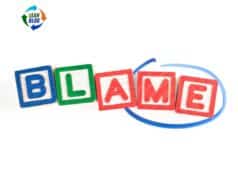CITIZEN-TIMES.com: Techniques improve factory efficiency at Industries for the Blind
Here is a very interesting story about a North Carolina lean consultant who worked with an Industries for the Blind facility, where 40 blind employees work.
“How, she wondered, do you introduce a system of visual cues to a facility where most of the work force is blind?”
One improvement they made was changing the layout and reducing batches so that products (such as shirts) flowed to a sighted inspector faster. It would be even more important, in this environment, to give timely quality feedback, since the blind employee can't inspect all details of their own work.
“Poteat rearranged the process so that liners come off the quilting machine directly onto a liner pile at a height where workers sitting at the sewing machines barely turn to grab the next liner and begin stitching the border. The quality inspector is just feet away to take the completed liner.”
Beyond the changes mentioned in the article, I could certainly imagine the value of disciplined 5S and workplace organization — it would be very important to always keep items in the same place so employees can reach and grab them without seeing them.
Also, while “visual controls” are an important aspect of lean, lean factories also use a lot of sounds, chimes, and songs to indicate problems with machines, problems in certain areas, etc. I would work on adopting those Toyota/Lean methods in that environment. Anything to reduce waste, that's really the key. As a lean person, don't so into an area thinking “how do I use these tools??” Go in and think about value and waste…. that will drive you as to what needs improved and how.
That said, I'm glad they are having success in what sounds like a very worthwhile cause.
“Where a poncho liner used to spend 8 1/2 hours in production, it's now 90 minutes from start to finish, and that area of the factory takes up one-third of the space it once did.”
What do you think? Please scroll down (or click) to post a comment. Or please share the post with your thoughts on LinkedIn – and follow me or connect with me there.
Did you like this post? Make sure you don't miss a post or podcast — Subscribe to get notified about posts via email daily or weekly.
Check out my latest book, The Mistakes That Make Us: Cultivating a Culture of Learning and Innovation:









Great article! It shows how TPS can be used in all situations. Also, highlighting a sense that blind people have “Sound” is another great idea. It’s common in manufacturing to use different music tones to indicate problems. I will definitely use this article in my organization, thanks.